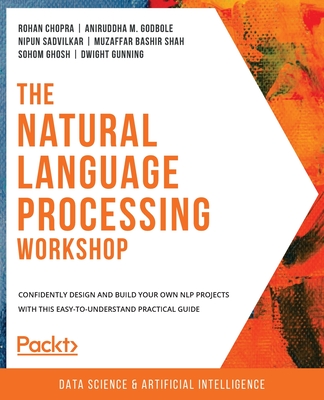Investigations in Computational Sarcasm (Cognitive Systems Monographs)
暫譯: 計算諷刺研究(認知系統專著)
Aditya Joshi, Pushpak Bhattacharyya, Mark J. Carman
- 出版商: Springer
- 出版日期: 2018-04-03
- 售價: $3,840
- 貴賓價: 9.5 折 $3,648
- 語言: 英文
- 頁數: 143
- 裝訂: Hardcover
- ISBN: 9811083959
- ISBN-13: 9789811083952
海外代購書籍(需單獨結帳)
相關主題
商品描述
This book describes the authors’ investigations of computational sarcasm based on the notion of incongruity. In addition, it provides a holistic view of past work in computational sarcasm and the challenges and opportunities that lie ahead. Sarcastic text is a peculiar form of sentiment expression and computational sarcasm refers to computational techniques that process sarcastic text. To first understand the phenomenon of sarcasm, three studies are conducted: (a) how is sarcasm annotation impacted when done by non-native annotators? (b) How is sarcasm annotation impacted when the task is to distinguish between sarcasm and irony? And (c) can targets of sarcasm be identified by humans and computers. Following these studies, the book proposes approaches for two research problems: sarcasm detection and sarcasm generation. To detect sarcasm, incongruity is captured in two ways: ‘intra-textual incongruity’ where the authors look at incongruity within the text to be classified (i.e., target text) and ‘context incongruity’ where the authors incorporate information outside the target text. These approaches use machine-learning techniques such as classifiers, topic models, sequence labelling, and word embeddings. These approaches operate at multiple levels: (a) sentiment incongruity (based on sentiment mixtures), (b) semantic incongruity (based on word embedding distance), (c) language model incongruity (based on unexpected language model), (d) author’s historical context (based on past text by the author), and (e) conversational context (based on cues from the conversation). In the second part of the book, the authors present the first known technique for sarcasm generation, which uses a template-based approach to generate a sarcastic response to user input. This book will prove to be a valuable resource for researchers working on sentiment analysis, especially as applied to automation in social media.
商品描述(中文翻譯)
本書描述了作者對計算諷刺的研究,基於不協調的概念。此外,它提供了對過去計算諷刺工作的整體觀察,以及未來面臨的挑戰和機遇。諷刺文本是一種特殊的情感表達形式,而計算諷刺則指處理諷刺文本的計算技術。為了首先理解諷刺現象,進行了三項研究:(a)非母語標註者進行諷刺標註時會受到什麼影響?(b)當任務是區分諷刺和反諷時,諷刺標註會受到什麼影響?(c)人類和計算機能否識別諷刺的目標。隨著這些研究的進行,本書提出了兩個研究問題的方法:諷刺檢測和諷刺生成。為了檢測諷刺,不協調以兩種方式捕捉:‘文本內不協調’(intra-textual incongruity),作者關注要分類的文本中的不協調(即目標文本),以及‘上下文不協調’(context incongruity),作者納入目標文本之外的信息。這些方法使用機器學習技術,如分類器、主題模型、序列標記和詞嵌入。這些方法在多個層面上運作:(a)情感不協調(基於情感混合),(b)語義不協調(基於詞嵌入距離),(c)語言模型不協調(基於意外的語言模型),(d)作者的歷史背景(基於作者過去的文本),以及(e)對話上下文(基於對話中的提示)。在本書的第二部分,作者介紹了已知的第一種諷刺生成技術,該技術使用基於模板的方法來生成對用戶輸入的諷刺回應。本書將成為從事情感分析研究者的寶貴資源,特別是在社交媒體自動化應用方面。












